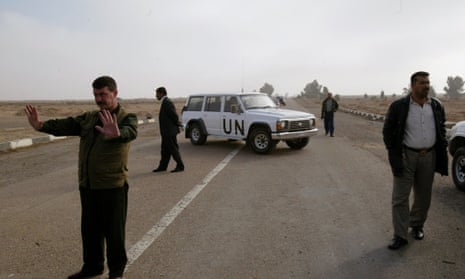On this day in March 1975 dignitaries gathered at ceremonies in London, Washington D.C. and Moscow to celebrate the entry into force of the Biological and Toxins Weapons Convention (known as the BWC). Entry into force meant the terms of this international treaty, outlawing germ warfare, had now gained legal traction. Today’s anniversary is of particular significance as the BWC has been called the world’s first genuine multilateral disarmament treaty: it prohibited an entire class of weapons from development, production and possession, rather than merely limiting or preventing nations acquiring certain weapons or provisions relating to use. Yet over time the BWC has not received the same attention as the other initiatives from the ‘détente’ era of the Cold War, particularly those concerning nuclear weapons. Its negotiation has gone largely unnoticed in general historical accounts of the period, and it continues to operate under the radar of many international affairs observers.
The BWC could be seen as part of the East-West dialogue of these years, which included agreements on political and economic cooperation and, most famously, the 1972 US-USSR Strategic Arms Limitation Treaty (SALT). In the same year, the BWC negotiations finished and the treaty was opened for signature. Review conferences for members have been held every five years since it entered into force and work continues from Geneva to strengthen and develop its provisions.
Advances in fields like biotechnology and the need to prevent states or terrorists developing or acquiring biological weapons mean that a convention negotiated over four decades ago now sits in a very different geo-political environment. There is also a national dimension, as signatories are obliged to implement domestic measures if required to comply with the convention. Internal legislation is a complex process in terms of regulation, investigation and responsibility across government departments, law and order agencies and internal boundaries, as was the case in passing the UK Biological Weapons Act of 1974. Almost 41 years since this Bill was passed, an individual in Manchester recently became the first person to be arrested under the Act, accused of attempting to acquire the toxin abrin.
So, why has this disarmament treaty been neglected? One explanation of its status is criticism in the years after its implementation for not including a verification element that could deter potential violators. The BWC, however, should also be seen in the context of arms control more generally, pursued consistently since the establishment of a permanent disarmament committee, the Eighteen Nation Disarmament Committee (ENDC), at the UN in Geneva in 1961. The nuclear Partial Test Ban Treaty in 1963 and Non Proliferation Treaty in 1968 demonstrated that agreements could provide a basis for East-West cooperation and international stability. Previously, efforts to control or eliminate chemical and biological weapons (CBW) had been mooted for a number of years as part of discussions on general and complete disarmament. Even earlier, the Geneva Protocol of 1925 prohibited CBW use in warfare but did not cover development or production, and a sizeable fraction of its parties reserved the right to retaliate in kind if CBW were used against them by enemies or allies of enemies.
In August 1968 at the ENDC in Geneva, the UK Disarmament Minister tabled a working paper which within a year became a UK draft convention at the renamed Conference of the Committee on Disarmament (CCD - now called the Conference on Disarmament - CD). The origins of this initiative lay in research conducted by the UK Foreign and Commonwealth Office’s (FCO) Disarmament Agencies, which decided chemical weapons and biological weapons should be separated on the basis that an agreement prohibiting the latter was more achievable in the international climate of the Vietnam War – where the US was controversially using herbicides and riot-control agents – and the deterrent-military realities of the wider Cold War. But the separation of chemical and biological weapons control was not popular among many nations who felt that a ban should be sought simultaneously for both, and exchanges at the CCD often reflected this disputed matter. Two years of intensive negotiations and redrafts then took place resulting in an amended Biological Weapons Convention, co-sponsored by twelve nations. The revised text nevertheless pledged to continue work towards a chemical weapons convention, the process for which began in 1975, but was not completed until 1993.
Détente altered the avenues for cooperation between East and West and an important element of this change was the arms control agreements such as the BWC, boosted by the presence of a permanent disarmament committee in Geneva. The multilateral nature of such committees gave voice to neutral and less militarily powerful countries, lessening the bipolarity of the Cold War. Even by 1980, as détente unravelled and new divisions in the world began, the ongoing work of disarmament officials and advisors ensured a continuous dialogue between nations on issues vital to international stability. And, with the ending of the Cold War, such institutions have continued their important work amidst the changes and challenges to global affairs. Remembering the origins and evolution of the BWC points us to the roots of such developments.
Alex Spelling is a Research Associate and Brian Balmer is a Professor in the Department of Science & Technology Studies, University College London. They are working on a project on the history of the Biological Weapons Convention, supported by the Arts and Humanities Research Council




Comments (…)
Sign in or create your Guardian account to join the discussion